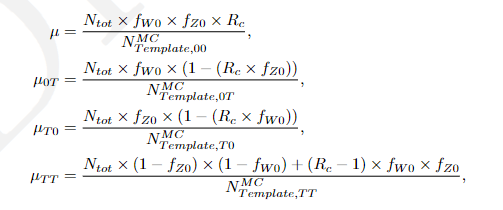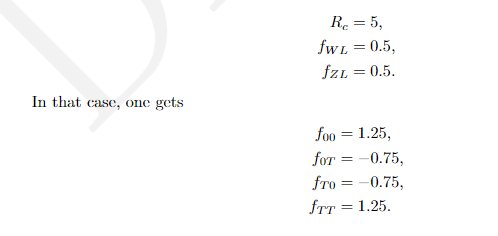Hi,
we are reparametrizing a HistFactory model from signal strengths to fractions.
(mu_1, mu_2, mu_3) → (f_1, f_2, mu_tot)
And f_3 is implicitly defined as (1-f_1-f_2)
However, this parametrization has the problem that the physical boundaries can not be guaranteed for the implicit f_3 fraction.
For the mu parameters hard boundaries can be set, for example a lower one of 0.
The same can be done for the explicit fractions alongside a hard upper bound of 1.
With this all fractions sum to one and all are guaranteed to be <= 1.
However, the f_3 fraction can become negative as both f_1 and f_2 can in principle become 0.8 for example.
Is there anyway to apply a hard boundary on implicit parameters like f_3 as it is possible with the explicit ones like mu_1 or f_1?
I have tried using external constraints for the fit with something like
RooFormulaVar x(..., ..., "1-f1-f2", RooArgSet(f1, f2))
RooGenericPdf constraintPdf(..., ..., "(x<0)*x*x*x*x + (x>1)*x*x*x*x", x);
but that always either still yielded unphysical values for f_3 or made the fit unstable.
So I am wondering how the hard cuts work for the explicit parameters and if it is possible to apply the same approach for the implicit ones?
Cheers
Jan-Eric

